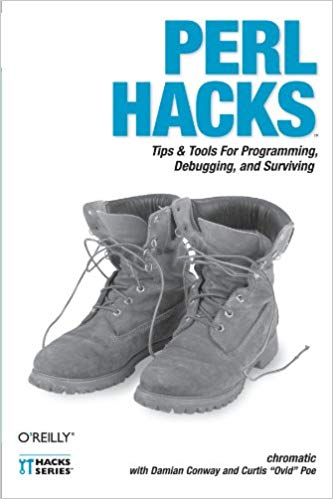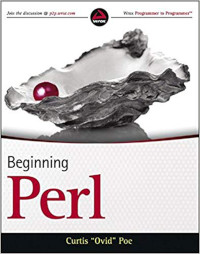Background: I recently proposed a new object system, name Cor, for the Perl core . This work has been done in coordination with Sawyer X and Stevan Little. What follows are my musings on the process and OO in general. For those things I inevitably get wrong in this discussion, it’s my fault, not theirs.
Contrary to what some might think, the discussions about the Cor OO system
are ongoing, but it’s happening quietly, via email, and the holiday period
doesn’t help.
And the Moose has function also doesn’t
help. At all. It’s possible that you’ve heard some rumblings about the has
function, so let’s clear up some of this. This will take some time, but I
promise you, by the time I’m done, that I will have given a rubbish
explanation of a hard problem. In throwing this together, I truly understand
Blaise Pascal’s comment “I would have written a shorter letter, but I did not
have the time.” If I had the time, this would be much shorter and clearer, but
I’m too lazy to delete this.
In Moose (and Moo , but we’ll stick to Moose
for this discussion), the has function lets you declare an attribute:
package Point2D {
use Moose;
has [qw/x y/] => (
is => 'ro',
isa => 'Num',
required => 1,
);
}
The above is a class for the canonical 2D point object that developers have a love/hate relationship about when learning OO concepts.
As you can see from the has declaration, we have:
- Created slots for the data
- Created read-only accessors for the data
- Required that they be passed to the constructor
That’s a lot to pack into one function, and it leads to confusion like this:
has attr => (
is => 'ro', # read-only
isa => 'Int', # declare it an integer
writer => 'set_attr', # but it's read-only?
required => 1, # 'attr' must be provided
builder => '_build_attr', # called if not passed in the constructor
);
There are other examples you could put together, but that shows part of the
issue: Moose has crammed so much into one function that it’s easy to write
code that is confusing or just plain doesn’t make sense. The above does make
sense if you realize that required doesn’t mean that the attribute is
required to be passed to the constructor (as some assume). The docs say this :
Basically, all [required] says is that this attribute must be provided to the constructor or it must have either a default or a builder. It does not say anything about its value, so it could be undef.
But what does declaring something as read-only and providing a writer (mutator) mean? That’s confusing because we’re really packing a lot of meaning into a single function.
What’s worse, it’s harder to write code that does what we need. If I want a private, internal slot, per instance, with no accessor, do you know how to do that in Moose? We tend not to do that too much with Moose simply because it’s hard to do, despite being trivial in other languages.
Well, you can declare a slot as bare (instead of ro and friends) and then do:
my $value = $self->meta
->get_attribute($attribute_name)
->get_value($self);
Except no one does that (by “no one”, of course, I mean “the set of no developers who aren’t not Stevan.“) They just declare the attribute private and that’s that. And I don’t blame them. But it means that everyone just makes accessors for everything, and that makes it much easier to make public accessors for everything and when I’m cleaning up code for a client, that’s a problem because it makes it much harder for me because now I have a public contract that I have to respect, even if there wasn’t originally a need to expose that data.
Encouraging people to write accessors is a bad idea, but people do it all over the place, just as they often make attribute mutable for no good reason (and here is a great example of why mutable objects are dangerous ). A good rule of thumb for OO design: make your interface as small as possible. Moose, unfortunately, offers an affordance to making our interace as large as possible.
Moving along, what does that point class look like in Java?
public class Point2D {
// slots
private double x;
private double y;
// accessors
public double x() { return x; }
public double y() { return y; }
// constructor
public Point2D(double x, double y) {
this.x = x;
this.y = y;
}
}
Note how the slots, the accessors, and the constructor arguments are all nicely decoupled, leaving no ambiguity.
And without going into detail, private slots with no accessors are trivial in Java, at both the class and instance level.
But where does that leave Cor? Well, Cor aims to be core, meaning that
overloading has is problematic. We’ve learned a lot from Moose about how to
make OO that feels “perlish”, but we need to keep growing and learn from our
mistakes. Returning to this:
has attr => (
is => 'ro',
isa => 'Int',
writer => 'set_attr',
builder => '_build_attr',
required => 1,
);
For Moose, that’s OK. For Cor, that’s not, because it means you can write
code that is, at best, confusing.
And then there are things like this:
my $auth = Authenticate->new($one_time_token);
# or
my $auth = Authenticate->new( user => $user, pass => $pass );
# or
my $auth = Authenticate->new({user => $user, pass => $pass});
Here’s one way you could try to handle that:
around BUILDARGS => sub ($orig, $class, @args) {
my %arg_for
= @args > 1 ? @args
: 'HASH' eq ref $args[0] ? $args[0]->%*
: ( token => $args[0] );
return $class->$orig(%arg_for);
};
In languages with multi-dispatch, if we add a new way of instantiating an
object, we can just add a new constructor and the language will handle the
dispatching for us. With Moose, we need to use BUILDARGS for this, and
manually handle all of that dispatching ourselves. That means more bugs. If
Perl had something like multidispatch, we could possibly write:
method BUILDARGS (Code $orig, Class $class, UUID $token) { ... }
method BUILDARGS (Code $orig, Class $class, Str :$user, Str :$pass ) { ... }
method BUILDARGS (Code $orig, Class $class, HashRef $args) { ... }
For Cor, we’re not going to get there because Perl doesn’t yet have robust
signatures like that and we’re probably never going to get multidispatch,
but decoupling the very overloaded meaning of has will help, and limiting
how we can pass arguments can help (no more “named pairs” or “hashref”
decision making).
And here’s a fun one! An attribute that you can’t set, even though it looks like you can pass it in the constructor:
#!/usr/bin/env perl
package SomeClass {
use Moose;
has 'username' => (
is => 'ro',
isa => 'Str',
required => 1,
init_arg => undef,
default => 'Bob',
);
}
# this prints "Bob"
print SomeClass->new( username => 'foo' )->username;
Of course, Cor could try to trap every possible illegal (or confusing)
combination and then what?
- Warn about them?
- Ignore them?
- Make them fatal?
- Do this at compile-time?
- At runtime?
And if we check illegal combinations, then if we ever extend has to have
more functionality, we have to figure out the new “illegal” combinations (such
as making attributes simultaneously required and lazy).
Do we stop developers from shooting themselves in the foot or hand them a gun?
The counter-argument I hear from many developers is “we don’t need to separate slots and attributes or a different syntax for declaring attributes. What we’ve been doing works.”
And frankly, this has worked fairly well. If the new Cor proposal doesn’t
provide some dead-simple way to create accessors, then we’ll wind up with 42
different modules to provide that and we won’t be that much further along than
when we started.
There are so many decisions to be made with Cor, many of which would be dead
wrong if we move too quickly and we don’t want to get this wrong. And the lack
of multi-methods and the inability to introspect signatures means the
BUILDARGS and BUILD pain will remain in some form (though BUILD isnt'
too bad).
Thus, we really want to have some separation of slots, attributes, and constructors, but making an easy syntax for that is is a challenge. As the old line goes, “making things hard is easy; making things easy is hard.” And making a solution that is easy and does the right thing and that all Perl developers will like is impossible. And there will be developers looking at the final solution and sayind “no” because their one pet peeve wasn’t respected.
As for our initial work with the syntax, the core Perl devs liked what they
saw in the initial proposal, but it’s one thing to say “shiny!“. It’s another
thing to hammer that shiny onto something that already exists. There are a
number of approaches which can be taken, but they require hard decisions. For
now, Cor will be focusing on the syntax.


